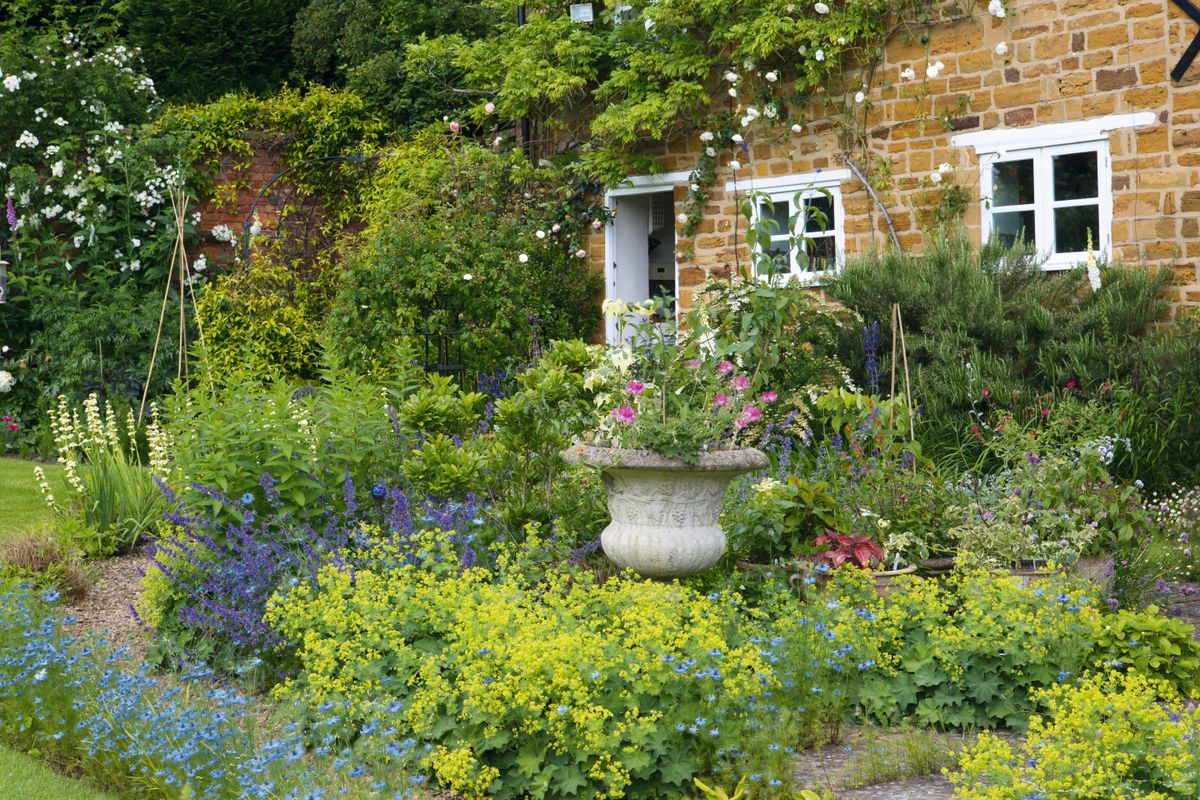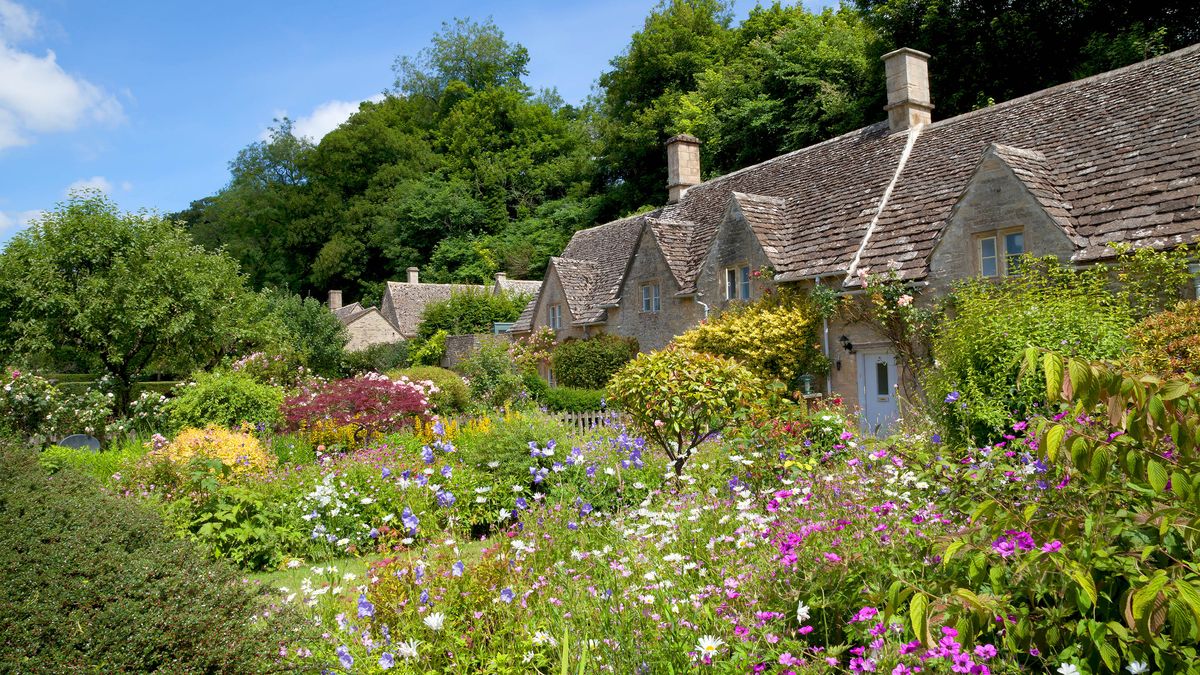Garden Design Ideas
Table Of Content

Be bold with your colors, encourage self-seeding and pack plants closely together so there is no bare earth,’ says Catherine Fairhall Lewis. Forget carefully manicured herbaceous borders with strict color schemes. How to plan a cottage garden is all about an informal mix of closely planted flowers across the color spectrum.
Choosing the Best Plants for your Cottage Garden
This garden is also often heavy on fragrance, as many plants have strong scents. And while you will find some straight rows in a cottage garden, the plantings are often arranged more haphazardly. Apart from the visual prettiness, there is the added bonus with cottage gardens of bio-diversity, with plants rarely suffering from diseases and pests due to the wide choice available. Having many varieties ideal for attracting beneficial insects and wildlife to your garden.
Sow the seeds of hardy annuals
This bushy perennial comes in a large selection of colors and blossom types and often has fragrant flowers. Having said that, they are fairly short-lived plants, usually growing for 3 or 4 years before dying out. After the blooms are finished, cut the flower stocks down to the foliage. They will bloom the first year, but will only reach their mature height in about 3 years. But the spikey flower stalks come in blue and purple as well as a variety of other colors.
Clary Sage
Traditionally a practical garden, supplying food and medicine around a farm laborer’s cottage, the style has evolved and is known and copied across the world. The romanticised idea of a country idyll, cottage garden design has became more decorative, containing both ornamentals and edibles, and with a focus on bio-diversity. 'Think about the aspect of the border – in other words, which way does it face? You can assess how much sun it will get or if the border is in shade most of the day,' says garden designer Fi Boyle. Although color blocking is a great way to create cohesion and impact, if you're really after a wild meadow feel, layer up a variety of hues and heights. Or, split your garden into two zones – one more naturalistic and carefree than the other.
This Gorgeous Yard Proves a Flower-Filled Meadow Is Possible, Even in a Small Space - Better Homes & Gardens
This Gorgeous Yard Proves a Flower-Filled Meadow Is Possible, Even in a Small Space.
Posted: Thu, 10 Aug 2023 07:00:00 GMT [source]
Keep it classic with climbing roses
We love how this ornate design can be spotted through the generous flower beds in front, which only add to its sense of privacy. Add a comfy sofa or chair inside, a small table, and perhaps a vase of freshly-cut blooms as a finishing flourish – it'll be your new favorite spot before you know it. A meandering path allows you to explore your garden from many perspectives.
The Mediterranean Garden Is the Sun-Soaked Style You Can Mimic in Any Yard - Better Homes & Gardens
The Mediterranean Garden Is the Sun-Soaked Style You Can Mimic in Any Yard.
Posted: Sat, 22 Jul 2023 07:00:00 GMT [source]
In the fall, cut the leaves back to 6″ but do not add them to the compost pile. They are deer and rabbit resistant, attract butterflies, and are nice as cut flowers. I find that poppies are best started from seed because they do not like to be disturbed. Prepare the soil to a depth of 2″ and scatter the seeds on top without covering. Aquilegia self-seeds and I just let them grow where they come up for a more random look in the garden.
Tall plants placed at the back provide a backdrop to set off the rest of the plants in a cottage border. Plants at the center of a border are what anchors the rest of the landscape. Choose varieties that are medium sized that can create a smooth transition between plants in front and back.
Don't forget about table linens, too, for your next vintage-style garden party. Enter hanging basket ideas – a fabulous way to utilize the verticals in a garden – whether you have a small courtyard, patio, or even just a balcony. We love how this design has been surrounded by hot-hued blooms – including the likes of marigolds and geums.
Even today, a traditional English cottage garden will contain herbs and fruit trees. An arbor, arch, trellis, pergola, or even an obelisk not only anchors a garden but also offers flowering vines, a cottage mainstay, a place to climb, says Cervoni. Once you have planted and established your cottage garden, it is essential to keep up with its maintenance. By taking care of your garden regularly, you can ensure that it will continue to be a beautiful and productive space.
Historically, the quintessential cottage garden would have evolved slowly and planting would have had no strict plan. Red brick walls, raised beds made from sleepers, and a jumble of vintage terracotta pots all offer a country-classic vibe that still feels laid-back. As well as all your favorite veggies and herbs, try training sweet peas up a home-made support of sticks for a shot of irresistible color and scent.

Obelisks are a good climbing plant support idea that suit a cottage garden well – whether placed in a large container or amongst other blooms in a deep border. Sculptures can also provide height and character, as can a smart garden building or one of the best trees for small gardens, such as this birch. Cottage gardens have an ethereal charm that lures you in and offers refuge from the craziness of the modern world. It’s colorful,” says Katherine “Kat” Aul Cervoni, landscape designer and founder of Staghorn NYC and The Cultivation. It’s a relaxed and happy space, and it’s OK if it’s not perfect.” Even container gardens and window boxes can reflect this joyful approach, if those are the only spaces you have for gardening. Cottage gardens are generally known for being informal, with a relaxed layout and a mix of flowers, vegetables, and herbs.
Comments
Post a Comment